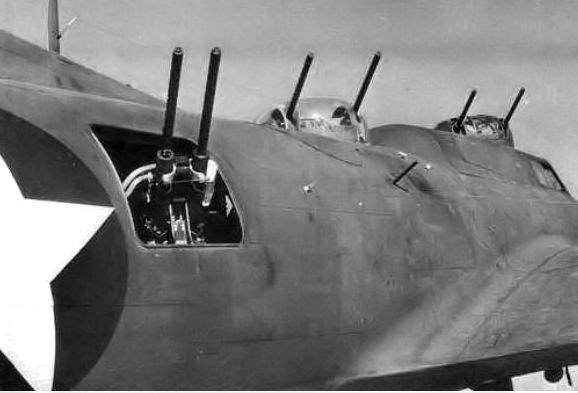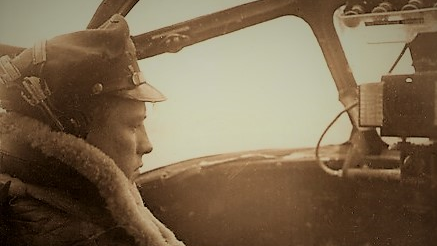
On March 16, 1944, the Provisional Army Air Forces Rescue Training School was established at Gulfport Field under the 1063rd Basic Flying Training squadron and the 1007th Quartermaster Rescue Boat, OTU (Avn). On April 1, 1944, they were transferred to Keesler AAF. On April 7, 1944, they were both disbanded and all personnel were transferred to the 2121st Army Air Forces Base Unit (Emergency Rescue School)
The Provisional Rescue Training School under the 2121 AAFBU established its headquarters in Hangar 1 on Keesler AAF where it managed both the air and marine training. While the air training was conducted from Keesler, the marine training continued to be conducted at Gulfport Field and the East Pier, Gulfport, Mississippi.
On Jun 9, 1944, the Provisional designation was removed when it was confirmed that the Emergency Rescue School would remain at Keesler.
And, effective 31 July 1944, the 2121 AAFBU was disbanded and the 3704th AAF Base Unit, under the Western Training Command took over its men and equipment. The Emergency Rescue School was placed on the same status as the Technical School and the Basic Training Center in the 3704 AAF Base Unit. It would report to the 3704AAFBU Deputy for Training and Operations, but its daily operation and training mission would be accomplished by its own officers.
As of 1 July, the 2121 AAFBU had 1654 men assigned while Keesler, including the 2121, had a total of 23,671 men assigned. By August 30, 1944, the Emergency Rescue School had 422 men assigned to the Air section and 513 assigned to the Marine section, with a total Keesler population of 20,862.

Colonel John F. Guillett, the former Commanding Officer of the 2121st AAF Base Unit was briefly reassigned as the Director of the Emergency Rescue School on August 1, 1944. However, Col Guillett was placed on unassigned status and Major Robert L. Rizon was officially assigned as Director, Air-Sea Rescue Training on August 3, 1944
HISTORY OF AIR-SEA RESCUE TRAINING IN WW2
Air and marine elements which were fused to comprise the school at Keesler Field were developed separately.
MARINE TRAINING
Marine training was begun at New Orleans AAB in February, 1943, in a unit designated as the 100th QM Rescue Boat OTU, under the supervision of the Air Quartermaster. Crews trained were designated as QM emergency rescue boat crews.
Marine training became an Air Corps function in November, 1943 and was transferred to the training command. Early in 1944 the marine training unit was moved to Gulfport Field and became a part of the provisional AAF Emergency Rescue Training unit. Training facilities were set p at the marine base, formerly the Gulfport Yacht Club and at the East Pier in Gulfport, MS.
AIR TRAINING
The first tactical group of air crews in operation consisted of three PBYs. Pilots were trained by the US Navy at Pensacola and Jacksonville NAS between March and May of 1943. This group saw 8 months of action in the Mediterranean between June 1943 and February 1944. A total of 56 rescues were performed by them.
Four PBY crews comprised the second tactical group in operations. Pilots received a total of four hours of training under Consolidated Aircraft test pilots in February 1943 and first saw action in the southwest Pacific in August of 1943.
The first organized air training was at Hamilton Field, California. It later moved to Boca Raton, Florida, where the First Emergency Rescue Squadron was trained.
Air training was initiated at Keesler Field, Mississippi in March 1944.
Air-sea rescue training was organized into two separate courses, Flight training (OA-10 aircraft) and Marine training (Rescue Boats). Each would be composed of two phases, Ground instruction and Flying/boat training.
MARINE TRAINING

On July 31, 1944, the units of the 2121st Army Air Forces Base Unit were transferred from the Army Air Forces Eastern Flying Training Command to the 3704th Army Air Forces Base Unit, Western Technical Training Commands.

The
AIR TRAINING
OA-10A Aircraft Training
The first OA-10 crews entered training at KeelserEach crew spent from five to six weeks in training, during which flight training was given concurrently with ground instruction. Such factors as weather and aircraft availability affected their training. All ground training was conducted in Hangar 1.

By August 6, 1944 50 OA-10A aircrews had graduated. Twenty four crews had already been transferred overseas while twenty six were still waiting on orders and processing. Twenty nine OA-10A aircrews were in training while there were 52 crews waiting for training. By August 30, 1944 there were 36 OA-10A crews in training and 24 crews waiting on assignment. There was one OA-10A aircrew class of 16 crews scheduled for completion on average every five weeks between Sept 9, 1944 and Dec 9, 1944.


However, problems were arising from a lack of serviceable OA-10A aircraft.
On October 27, 1944 all Marine training was cancelled, effective immediately. This had a dramatic affect on the Emergency Rescue School as it affected two thirds of their personnel. At the same time, it became evident that the initiation of training for crews flying aircraft which carried life boats which had been under discussion since August 1944.
In October 1944, the first of 30 specially built lifeboats manufactured by Higgins of New Orleans was received and a tentative syllabi for training aircraft equipped with lifeboats had been written, although the program had not proceeded beyond the preliminary planning stage.



To prepare for the B-17H airborne lifeboat training, the course outline was initially completed on 23 December 1944. It was changed several times, with a new version approved on 25 January 1945 and then a newer one on February 23, 1945. It would consist of eight weeks of training: 48 academic days with 250 hours of ground instruction and 115 hours of flight instruction.
On April 10, 1945, it was shortened to five weeks, with 119 hours of ground instruction and 57 hours of flight instructions. This was a result of feedback from the combat area plus deletion of training that was duplicated elsewhere in the training pipeline.
Aircraft began to be assigned to Keesler for the school. By March 5, 1945, there were 29 OA-10A aircraft available and 15 B-17s available.
OA-10 aircraft serial numbers assigned to Keesler as of March 5, 1945:
43-43842, 43-43845, 43-43846, 43-43847, 43-43848, 43-43851, 43-43854, 43-43863,
44-33868, 43-33869, 43-33870, 44-33871, 44-33872, 44-33898, 44-33900, 44-33919, 44-33921, 44-33968, 44-33970, 44-33971, 44-33972, 44-33973, 44-33978, 44-33979, 44-33980, 44-33992,44-33996, 44-34002, 44-34025
There were 15 B-17s assigned to the Emergency Rescue School in March of 1945. Fourteen were used in the training of ERS crews and one B17 was used for pilot proficiency.
B-17 aircraft serial numbers assigned to Keesler AAF as of March 5, 1945:
B-17F: 41-34408, 42-3465, 42-6004
B-17FQ: 42-29755, 42-30108
B-17GQ: 42-39765
TB-17F: 42-5708, 42-5799, 42-6083, 42-6133, 42-29503, 42-30883
TB-17FQ: 41-24440
TB-17G: 41-38147, 42-97598
There was also one C-47 (serial # 41-7745) assigned to the Emergency Rescue School. It was used to check out ERS students in it as the deployed Emergency Rescue Squadrons were also equipped with C-47s.
There was one XB-40, serial number 41-24341, at Keesler during this time frame. It was the prototype for the XB-40 aircraft and was the second production B-17F-1-BO built. The purpose of the XB-40 was to provide extra protection to the B-17 bomber formations flying over Europe. Designated the YB-40, twelve were tested with the 92nd Bombardment Group at RAF Alconbury on May 8, 1943. They proved to be ineffective and most of the surviving aircraft returned to the U.S. in November 1943 and were used as trainers

In April, there were 31 OA-10A aircraft assigned and only 12 B17s

The training syllabus changed rapidly, and the third syllabus came out just 3 days prior to their start. It would consist of approximately 250 hours of ground instructions covering . The flying training would consist of approximately 115 flying hours. The pilot and copilot would receive a few additional hours of training. Graduation was scheduled for April 21, 1945. At that time the crew would then proceed to Hunter AAF, GA on April 26, 1945 to pickup the airplane they would fly overseas.

Up until May 2, only one radar equipped B-17 was available. On May 2, 1945 seven B-17Gs equipped with the SCR-717B radar were diverted to Keesler from Hunter AAF, GA to help with this training shortage. Four more radar equipped aircraft were scheduled to be delivered by May 30, 1945




On May 7, 1945, seven B-17Gs were delivered to Keesler from Hunter AAF, Ga. They were diverted from the staging process of moving them to the Pacific. They were equipped with the SCR-717 B ground surveillance radar. It was expected that four more B17Gs with the SCR-717B radar would be delivered from Miami by May 30, 1945.
After some discussion, it was decided that all Air-Sea Rescue B-17s and OA-10A aircraft would be equipped with the AN-5851 sextant. This was the name for the Army-Navy A-14 sextant (For more information, go to http://jimsoldtoys.blogspot.com/2011/04/pby-sextant.html)








